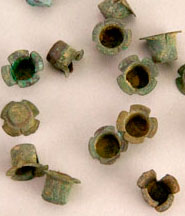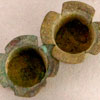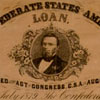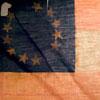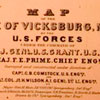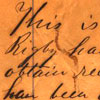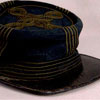
| A. Title: The Army and Navy: Significant Factors in the Vicksburg Campaign During the Civil War |
||||||||||||||||||
|
||||||||||||||||||
| B. Overview of this Collection-Based Lesson Unit Plan |
||||||||||||||||||
|
||||||||||||||||||
| C. Museum Collections, Similar Items and other Materials Used in this
Lesson Unit Plan |
||||||||||||||||||
|
||||||||||||||||||
| D. National Educational Standards |
||||||||||||||||||
NSS-USH. 5-12.5. Era 5: Civil War and Reconstruction [1850-1877]
[Back to top] |
||||||||||||||||||
| E. Student Learning Objectives |
||||||||||||||||||
|
||||||||||||||||||
| F. Background and Historical Context |
||||||||||||||||||
The Vicksburg Campaign, a series of maneuvers and battles, consisted of several important naval operations, troop maneuvers, failed initiatives, and battles between 1862 and 1863.The Campaign consisted of two phases: Operations against Vicksburg and Grant’s operations against Vicksburg. Both the Union and Confederates needed supplies. Union soldiers traveled long distances from their supply wagons and lived mainly off the land. Confederates on the other hand, hoarded food and ammunition. Grant conducted several expeditions in an attempt to enable water bound access to the Mississippi south of Vicksburg’s artillery batteries. All of the expeditions failed. Pemberton’s army surrendered on July 4, 1863, one day after the Confederate defeat at Gettysburg. Grant’s Vicksburg Campaign is considered one of the masterpieces of American military history. |
||||||||||||||||||
| G. Vocabulary |
||||||||||||||||||
| Cavalry – Soldiers who fight on horseback. Flank – The right or left side of a formation of soldiers. Infantry – Soldiers who fight on foot. Siege – An attempt to capture a place by surrounding it and battering it until it surrenders. Adversaries – Enemies or opponents Insignia – Badges that show rank, honor, or membership. Maneuver - To carry out a military movement. Veterans – People who have served in the armed forces. Rations – Fixed amount of food allotted to military personnel. Watch – A period of time a crew member is assigned duty, usually of four hours, on board. [Back to top] |
||||||||||||||||||
| H. Teacher Tips |
||||||||||||||||||
|
||||||||||||||||||
| I. Lesson Implementation Procedures |
||||||||||||||||||
| Activity One:
Informative Session: Discuss meaning of each vocabulary word with students using handouts. Students keep definition in binders. Discuss Civil War and why it was fought. Activity Two: Review words and facts on The Civil War. Students write 5 questions about material discussed on Day One. Students will read an image using the “Read a photograph” chart. Students create question cards to be used in next day’s activity. Activity Three: Read, discuss historical documents on Vicksburg Campaign. Play Civil War trivia game. Divide the students into two groups. Use question cards generated by students on previous day. Have one student be caller for game. Caller asks questions. Teacher will monitor groups. Group with most correct answers wins the game. Activity Four: Students will plot the troop movement of Fred Grant, the 12 year old son of General Ulysses S. Grant on a United States map and calculate the mileage that the unit traveled. Students will write a letter to U.S. troops in Iraq. Activity Five: Students will design a flag or banner featuring the insignia for their regiment. Provide students with a description of a typical Civil War sailor’s daily routine on board a gunboat. Use a large clock face. Divide the class into “Watches” by assigning groups shifts in blocks of 4-5 hours (shift/watch times vary depending on number of students in class) to cover the whole 24 hours. Have students compile a list of duties that would be conducted during each of their “Watch periods.” [Back to top] |
||||||||||||||||||
| J. Evaluation/Assessment for Measurable Results |
||||||||||||||||||
|
||||||||||||||||||
| K. Extension and Enrichment Activities |
||||||||||||||||||
|
||||||||||||||||||
| L. Resources |
||||||||||||||||||
|
||||||||||||||||||
| M. Site Visit |
||||||||||||||||||
The site visit includes a visit to the:
Before the visit, have students visit the institution’s website for an overview or provide brochures and other written/visual materials about the site. Have each student come up with 2-3 questions to guide the visit. Work with park interpretive and museum staff to arrange the visit with challenging activities. Site visit: At the site, have students select at least two objects on exhibit to analyze. Provide “How to Read an Object” sheets. It also includes an object sketch sheet (white space to make a detailed sketch of the objects). For younger students, use the ‘How to Read an Object’ chart for elementary school students together with a “scavenger hunt” object list to encourage close observation skills. [Back to top] |
||||||||||||||||||
